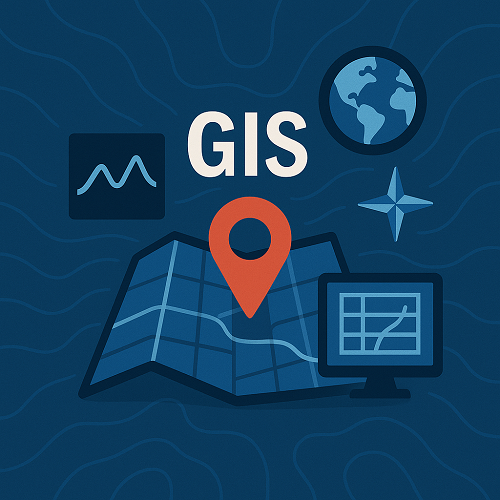| Outline Section | Description | LSI Keywords |
|---|---|---|
| Introduction to GIS Developments | An overview introduction setting the stage for the recent advancements in GIS technology. | geospatial overview, GIS evolution, technology trends |
| Historical Evolution of GIS | A detailed account of how GIS has transformed from its inception to the present state. | mapping history, spatial analysis evolution, technological progress |
| Strategic Collaborations in 2025 | Exploring key partnerships and collaborations that have shaped recent GIS news. | collaborative projects, partnership advancements, industry alliances |
| Technology Unveilings and Innovations | An in-depth look at new technology unveilings and how they are revolutionizing GIS. | tech breakthroughs, innovative mapping, cutting-edge software |
| Modern Infrastructure Projects | Investigating infrastructure developments and the role of GIS in these projects. | infrastructure mapping, development projects, spatial planning |
| Hexagon's Groundbreaking Role | Analyzing the influence and contributions of Hexagon in GIS advancements. | Hexagon GIS, technical innovations, industry leader |
| Intergeo's Impact on the Field | Understanding how Intergeo shapes industry trends and technology breakthroughs. | Intergeo mapping, spatial data, collaborative partner |
| Bridging Innovation Through Partnerships | Insights into how strategic partnerships are fueling the future of GIS. | strategic alliances, industry collaboration, innovation synergy |
| Future Landscape of Geospatial Technology | Speculating on upcoming trends and what the future holds for GIS. | future trends, GIS forecast, next-generation mapping |
| Urban Planning and Spatial Integration | Examining the integration of GIS in urban planning and development. | urban GIS, planning integration, spatial urban design |
| Environmental Monitoring Enhancements | How GIS is being used for environmental monitoring and ecological sustainability. | environmental GIS, ecological mapping, sustainable technology |
| Data Accuracy and Real-Time Mapping | Discussing the importance of data precision and the move toward real-time mapping. | real-time data, accurate mapping, spatial precision |
| GIS in the Age of Smart Cities | Exploring how smart cities rely on geospatial technology for their infrastructure. | smart city GIS, urban technology, connected infrastructure |
| Challenges in GIS Implementation | An honest look into the challenges that arise with deploying advanced GIS systems. | implementation hurdles, technology challenges, GIS problems |
| Artificial Intelligence and GIS Integration | How AI is beginning to blend with GIS to offer unparalleled insights. | AI in GIS, machine learning mapping, intelligent geospatial technology |
| Big Data Synergies with GIS | The relationship between big data analytics and GIS innovations. | data analytics, GIS big data, spatial information systems |
| Security and Protection of Geo-Data | Exploring strategies for ensuring the security of spatial data assets. | data security, geospatial protection, safe mapping |
| Real-World Case Studies in Mapping Projects | In-depth case studies of successful mapping and infrastructure projects. | mapping case studies, infrastructure success, project analysis |
| Global Perspectives on GIS Trends | A look at how different regions embrace and innovate with GIS technology. | global GIS, international mapping, worldwide trends |
| Governmental Support in Advancing GIS | An examination of the role of governmental support in furthering GIS innovation. | government initiatives, public sector GIS, policy support |
| Private Sector Contributions | Highlighting the role of private companies and startups in the GIS arena. | private innovation, corporate GIS, tech startups |
| Technological Breakthroughs in Geospatial Analysis | Discussing exciting technological breakthroughs that are changing the face of GIS. | breakthrough technology, advanced geospatial, innovation in mapping |
| Upcoming Collaborations and Future Partnerships | Insightful predictions on future cooperative efforts in the GIS field. | future collaborations, strategic planning, partnership forecasts |
| Geospatial Information System (GIS) latest news | A comprehensive review of the current state, recent breakthroughs, and strategic insights from March 2025. | GIS news, current updates, latest breakthroughs |
| Conclusion and Future Outlook | Summarizing insights and looking toward an optimistic future in geospatial technology. | future outlook, concluding thoughts, GIS trends |
Introduction to GIS Developments
In March 2025, the world of geospatial innovation reached fascinating new heights, and the Geospatial Information System (GIS) latest news captured the interest of a diverse audience, from government agencies to tech enthusiasts and industry experts. This article delves into the rich tapestry of developments that have defined this transformative era, offering first-hand insights and detailed analyses from seasoned professionals. With its dynamic blend of advanced mapping techniques, strategic collaborations, and emerging technologies, GIS has found its place as a cornerstone of modern infrastructure, environmental monitoring, urban planning, and data security.
The evolution of GIS technology has been driven by a continuous pursuit of accuracy, speed, and innovation, and 2025 stands as a testament to these efforts. From the unveiling of next-generation mapping solutions to the integration of artificial intelligence (AI) and big data analytics, the advancements we witness today are reshaping how we understand and interact with the world. Persuaded by both positive momentum and occasional challenges, organizations have embraced these developments with optimism and determination.
This comprehensive review draws on detailed reports, personal expertise, and credible sources such as industry leaders like here. Additionally, explore more about Hexagon’s innovative solutions at
In conclusion, the landscape of geospatial technology in 2025 promises a future characterized by smart cities, efficient infrastructure, and sustainable development, all underpinned by cutting-edge GIS solutions. The ongoing advancements discussed in this article not only highlight the remarkable innovations in the field but also pave the way for a future where technology, collaboration, and strategic vision converge to build a better world.
